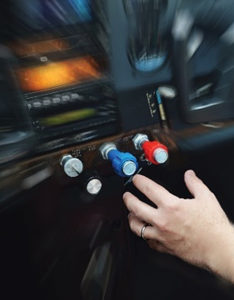The Startle Response
Fatal general aviation accidents often result from inappropriate responses to unexpected events. Humans are subject to a “startle response” when they are faced with unexpected emergency situations and may delay action or initiate involuntary action in response to the emergency. Training and preparation can reduce startle response time and promote more effective and timely responses to emergencies.
Don’t Get Caught By Surprise
Loss of aircraft control is a common factor in accidents that would have been survivable if pilots maintained control throughout the emergency. In some cases, pilot skill and knowledge were not sufficiently developed to prepare for the emergency, but in others, an initial inappropriate reaction began a chain of events that led to disaster.
Some examples of unexpected events during flight that could crop up and cause an emergency (or an accident if it is not managed properly) include:
- Partial/full loss of power on takeoff
- Landing gear extension/retraction failure
- Bird strike
- Cabin door opening
- Control problem/failure
Train and plan for emergencies. In many cases, pilots don’t review and practice how they will handle unexpected events and abnormal or emergency situations except during flight reviews or other recurrent training.
Chair Flying
Unexpected events — especially those occurring close to the ground — require rapid, appropriate action. Your chances of a safe outcome are greatly improved if your response to an unexpected event is anticipated, rehearsed, and practiced ahead of time. Review “what if” scenarios in your head and practice what you would immediately do should certain events take you by surprise.
Better yet, after visualizing the onset of a problem, say out loud what you will do and then reach out and touch the control or instrument you just mentioned. Mental drills like this in a non-stressful environment (like your favorite chair at home!) will help you develop a pre-planned course of action and test your mastery of your abnormal and emergency checklists.
Of course, for added realism, you can also try these same exercises while sitting in your airplane. And if you’re ready to test out your new and/or revised procedures, consider getting together with a flight instructor and practice them on a training flight. If you sign up for the WINGS pilot proficiency program, you can even have those hours count towards a phase of WINGS.
Simulate to Stimulate
Flight simulation is another great tool for planning and preparing yourself to handle unexpected events. Today’s flight training devices for general aviation offer a tremendous range of possibilities. With the assistance of a qualified instructor, you can experience an engine failure after takeoff, or practice your reaction to a primary or multi-function flight display failure. Your instructor can also give you practice with electrical failures, control-system failures, and more.
Flight simulation software on your home computer or personal electronic device can also help you practice handling a variety of malfunctions and failures. Some of these programs will let you set up random failures during a flight and let you experience them as you would in real-world flying. One of the biggest benefits of such practice is the ability to experience both sudden and subtle failures, become familiar with their early indications, and practice overcoming the natural human tendency toward denial (“this can’t be happening to me”) and rationalization (“it’s probably just a gauge problem”).
The Right Stuff
As any test pilot could tell you, the discipline of planning for both positive and adverse outcomes is one of the most essential elements in the mysterious mix that makes up the “right stuff” to be a pilot. For a good pilot, that right stuff includes solid training, regular review and practice, and the discipline to strive for proficiency and perfection on every flight. It includes understanding your aircraft’s systems — how they work, how they fail, and how those failures could affect other systems or controls.
Right Stuff — Wrong Place, Wrong Time
Fortune and Misfortune in Surface Safety
The right stuff also includes mastery of single-pilot crew resource management (CRM). A pilot with good CRM skills is one who has strong situational awareness of the aircraft and its flight path, and the range of resources (e.g., air traffic control) that can assist. Finally, the right stuff includes planning, which can make all the difference when encountering an unexpected event.
Reprinted with permission from FAA Safety Briefing. Visit the Flight Safety Briefing website: https://www.faa.gov/news/safety_briefing/.





